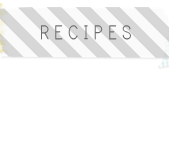General
- Whenever possible, use the best available ingredients you can (and can afford, no need to break the bank!). The final product will only be as good as the ingredients you put in them.
- Before beginning, read through an entire recipe once over. Trust me, it takes no time and it helps give you a general feel for what you'll be doing.
- Softened butter does mean softened, but not melted! Softened actually just refers to room temperature. You should be able to leave an indentation in the butter with your finger but the butter should still retain its shape.
- When creaming butter and sugar together, do so for approximately three minutes (unless of course, otherwise specified). Yes, this may seem excessive, but it makes a world of difference! And the Magnolia Bakery said to do it, so you do it.
- Always take notes during and after baking, especially when trying out new recipes (I just use sticky notes). This is something I do religiously, and it's always been beneficial the next go-around.
- Write down specific or special products you may use, such as a brand you especially liked or a certain bag size that you used.
- Take notes on the things you liked and/or disliked about the dessert, including flavor and texture. If you really love the base of a dessert, write this down! Then you can use it later on to create your own special treat with some of your favorite mix-ins.
- Write down any problems you may have encountered while preparing the dessert. Take note if the pie dough needs to handled extra carefully or if the baking time needed to be reduced.
- Unless stated in the recipe, use unsalted butter for cookies.
- If cookies seem to spread too thin while baking, store the batter in the refrigerator while batches are baking, which keeps the butter firm.
Pies
- Butter produces the best flavored crusts, shortening gives it that wonderful flakiness. Through my experiments with several types of crusts, I've found that using half butter and half shortening makes a fantastic crust!
- Chilled pastry dough is the way to go (that rhymes!). The refrigerator is your friend when it comes to crust because a warmed dough is much harder to roll.
- Use two pieces of wax paper or cling wrap when rolling out pie crust dough. It'll make your life SO much easier. Subsequently, use the wax paper or cling wrap to handle the dough and avoid using your bare skin as much as possible.
- If the pie crust appears to be browning too fast while in the oven, apply a pie crust shield or wrap aluminum foil around the pastry. This will prevent the crust from browning any further.
- Cold butter and cold liquid make the best scones. Keep these ingredients in the refrigerator until you are absolutely ready to incorporate them.
- If you have one, use a food processor when making the dough. Handle the dough with your hands as little as possible!
- A key component in producing the best cheesecakes is having all of the ingredients at room temperature, which allows for incorporation of the eggs, the best texture, and maximum cake volume (as you can tell this is straight from Marcy Goldman!).
- The best thing to do to avoid cracking on the top of your cheesecakes is to not over whip the cream cheese. Beat the cream cheese until smooth and when adding in remaining ingredients, only mix until well incorporated.
- Important when cooling cheesecakes: avoid sudden hot-to-cold temperature changes. Let the cheesecake cool in the oven for an hour or so, and then continue to let the cheesecake cool at room temperature. Not going to lie, my impatience gets to me, but it's well worth the wait!




